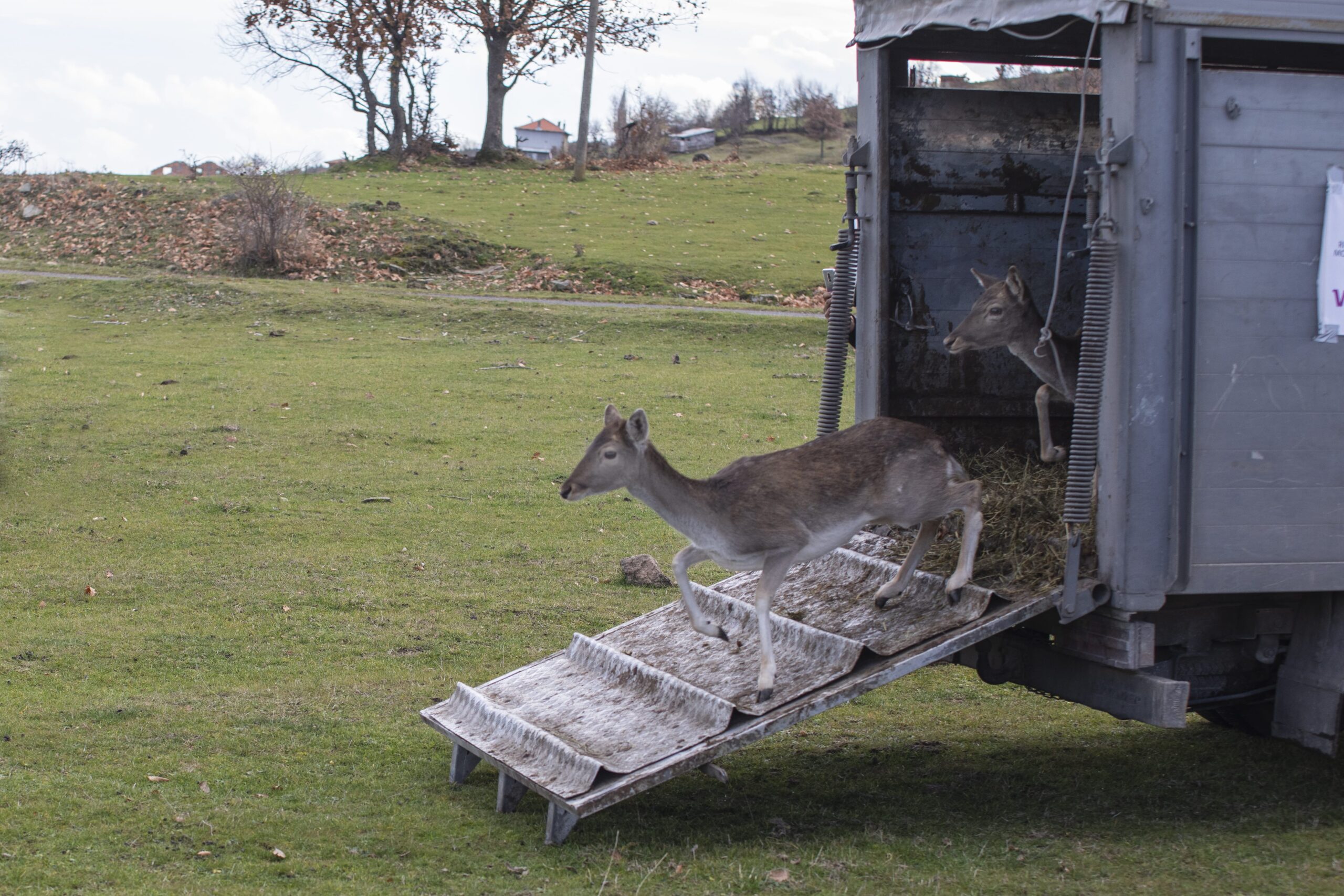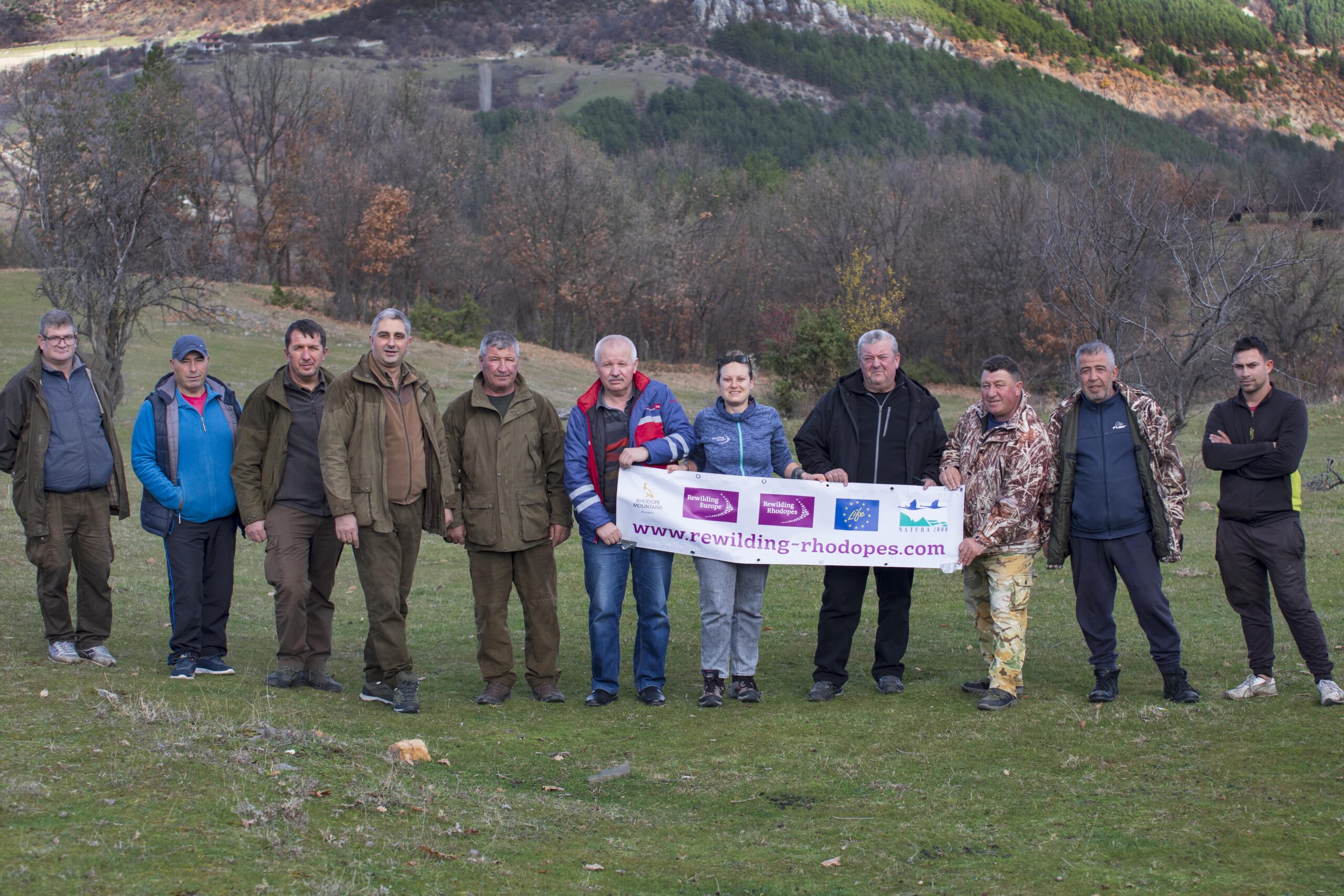42 fallow deer were released on southern shore of the Kardzhali reservoir in November and are now monitored by the Rewilding Rodopes team.

“We hope that with the release the animals in the area of Boyno we will connect these two new groups with the existing population in the area of Studen Kladenets,” said Stefan Avramov, rewilding officer. The core Studen Kladenets rewilding area and its surrounding territories are home to the larest fallow deer population in Bulgaria, and perhaps in Europe. Connecting the different groups would contribute to the exchange of animals and the natural resettlement of the species on the territory of the entire Eastern Rhodopes. According to Stefan the animals are going to inhibit an extremely preserved and beautiful area with small human disturbance.
Next few months more than 50 fallow deer will be transported and released south of Krumovgrad and Momchilgrad, two other areas where the team is working and releasing animals. The goal is to gradually restore the fallow and red deer in the whole Rhodope Mountains rewidling area.

Biodiversity in the Rhodopes is one of the richest in Europe. By grazing shrubs and trees, deer together with other herbivores help maintain the typical mosaic landscape of the Eastern Rhodopes, which is of great importance for the conservation of the rich biodiversity of this region. The remains of dead fallow deer are an important food base for griffon, Egyptian and black vultures. The deer are an interesting object for observation and photography by tourists and photographers and contribute to the establishment of the region as an interesting wildlife tourist destination. So far, more than 400 fallow deer and 50 red deer have settled in the Eastern Rhodopes.
The fallow deer was widespread in the past in the Bulgaria. It is depicted in several Thracian treasures such as Panagyurishte and Lukovit, and its bone remains have been found in almost all Bulgarian prehistoric settlements. It is believed to have been exterminated by man in the early Middle Ages. At the beginning of the last century its restoration in Bulgaria began.